My extended group of gamer friends are getting together for our annual RPG excess this coming weekend — sort of like a house con, with 3-4 games running per slot and 30+ people invading my house for a weekend. I’m only running one game this year, a Call of Cthulhu one-shot, which I have yet to write.
I know the premise of the game, and I know how it’s going to end (not necessarily with everyone dead, depending) but I don’t yet know how I’m getting there.
However, over the years of running Call of Cthulhu games, I’ve developed the generic Cthulhu formula that covers most good Call of Cthulhu one-shots.
The Call of Cthulhu Progression of Creepy
The key to the game is the slow progression of creepy. You can just jump straight into full on horror — you have to build up to it, you have to lure the players into it slowly, which is tough because of course they all know they’re playing Call of Cthulhu. Here is the progression:
- Setting the stage: The characters meet up or interact for a bit, establishing their roleplaying personas and the situation/setting in which the game begins.
- Investigation or motivation: The characters are supposed to investigate something mundane — even if it’s a haunted house, they don’t believe in ghosts so the investigation is mundane in nature. This could also be a simple task that doesn’t involve investigation, as simple as “fly to France” but investigation is the more common Cthulhu plot hook.
- Mystery: The investigation or action reveals a mystery — there’s something going on here! Secret doors, clues, the plan is hijacked — this is what gets the plot moving and gets the characters engaged in the plot, rather than just in themselves.
- The inexplicable: Something(s) inexplicable happens. There is no apparent logical explanation for this that the characters can think of… this is odd. Around this point — or earlier — the characters must be isolated. They need to be in a location and/or situation in which they can’t just decide to go home or let the police deal with things. They in a plane, on an island, in the isolated haunted house and the storm is causing cell phones not to work. They can also be isolated by motivation — they’re obsessed with the answer to who killed their mother, or the bomb planted in their brain will blow up if they leave.
- Something downright creepy and/or mildly horrifying happens, but not necessarily supernatural. A dead body is found, or blood is dripping from upstairs. Something is now very seriously wrong — it’s not just a suspicion anymore, there’s proof — this is the first opportunity and motivation the characters have to bolt, which is why they must be isolated beforehand. This should be something where the characters have to investigate, but they pretty much know the investigation will lead to worse things (like the source of the dripping blood). This builds the tension.
- Knowledge and horror: Something else horrifying happens, possibly the reveal from the intro above, possibly something new. Very likely this revelation is directly tied to the investigation/actions the characters are taking — the more they learn about the deep secret of the game, the more horrifying things happen. The dead body follows them downstairs and corners them in the basement, the blood is coming from the bathtub, and in it they find something horrible that attacks. This section can last for some time, or be fairly short. The longer you can stretch it out, however, the more memorable the game is — keeping players peaked in the horror atmosphere that Cthulhu is all about.
- The awful truth. The typical end mixes the pinnacle of horror with the final revelation of information: what is actually going on. You’re all infected with the zombie virus, you’re the only ones left alive in the world, you accidentally unleashed an Old One on your home town, etc. Or possibly it’s a twist — none of it ever happened and it’s just implanted memories, or you’re actually the cultists and the “bad guys” were the heroes. Either way there’s a big revelation that ideally has been hidden up until the climax, and is a combination of knowledge and horror.
In my experience with running Cthulhu one-shots, the hardest part is that stretch of horror before the revelation. Mysteries to investigate are easy. Ways to isolate characters are easy. Even the awful truth is easy, because that awful truth is often the original idea behind the game, so it’s the starting point. But building slowly up from inexplicable to creepy to horrifying and then staying at horrifying — that’s the tough part.
And that’s the part that I’m stuck on for my game at the moment. I started with awful truth as the game idea. I have a setting and know who the characters will be. But getting them from the starting point to a point of horror is tough — especially since in this case the characters are all going to be sort of cultist lackeys — the servants to the powerful master cultists, who must guard the home base from the assaults of rival cultists while their masters try to summon the Old Ones. So they’re going to start identifying themselves as evil, which makes it harder to make the horror seem horrible.
Fortunately the characters will have no significant powers or spells — that again lessens the sense of horror — since they’re just lackeys and wannabies. But it’s still rough. And I run the game in Friday. Three days from now. Gulp.


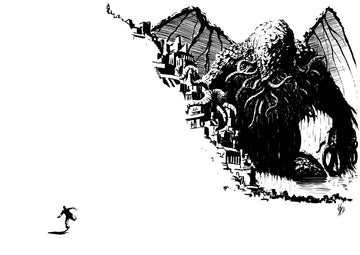
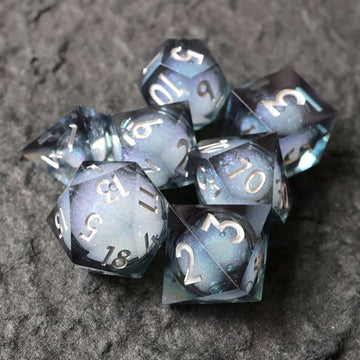
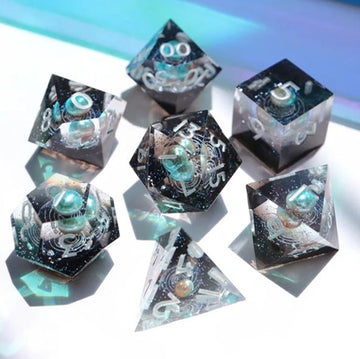
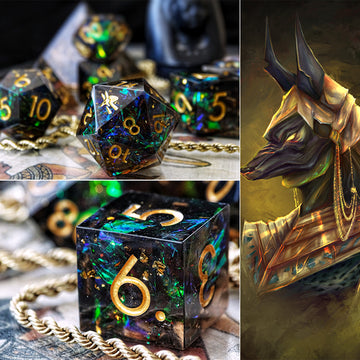
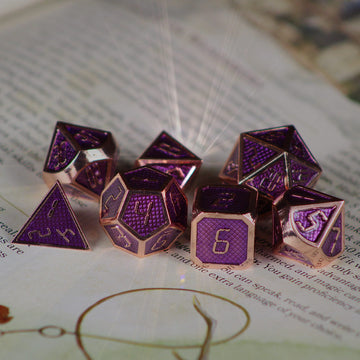
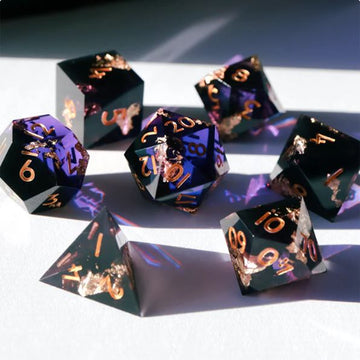
1 comment